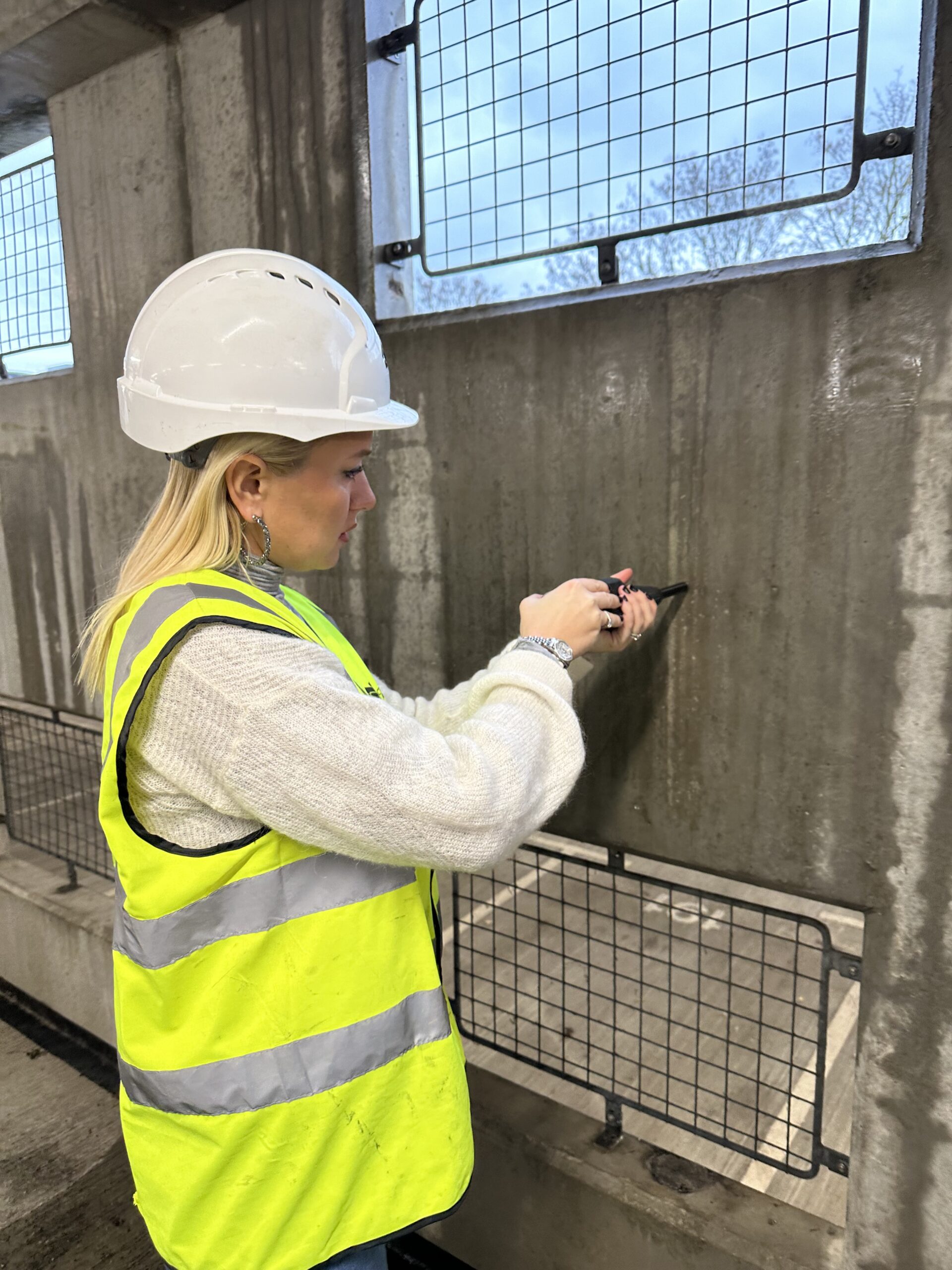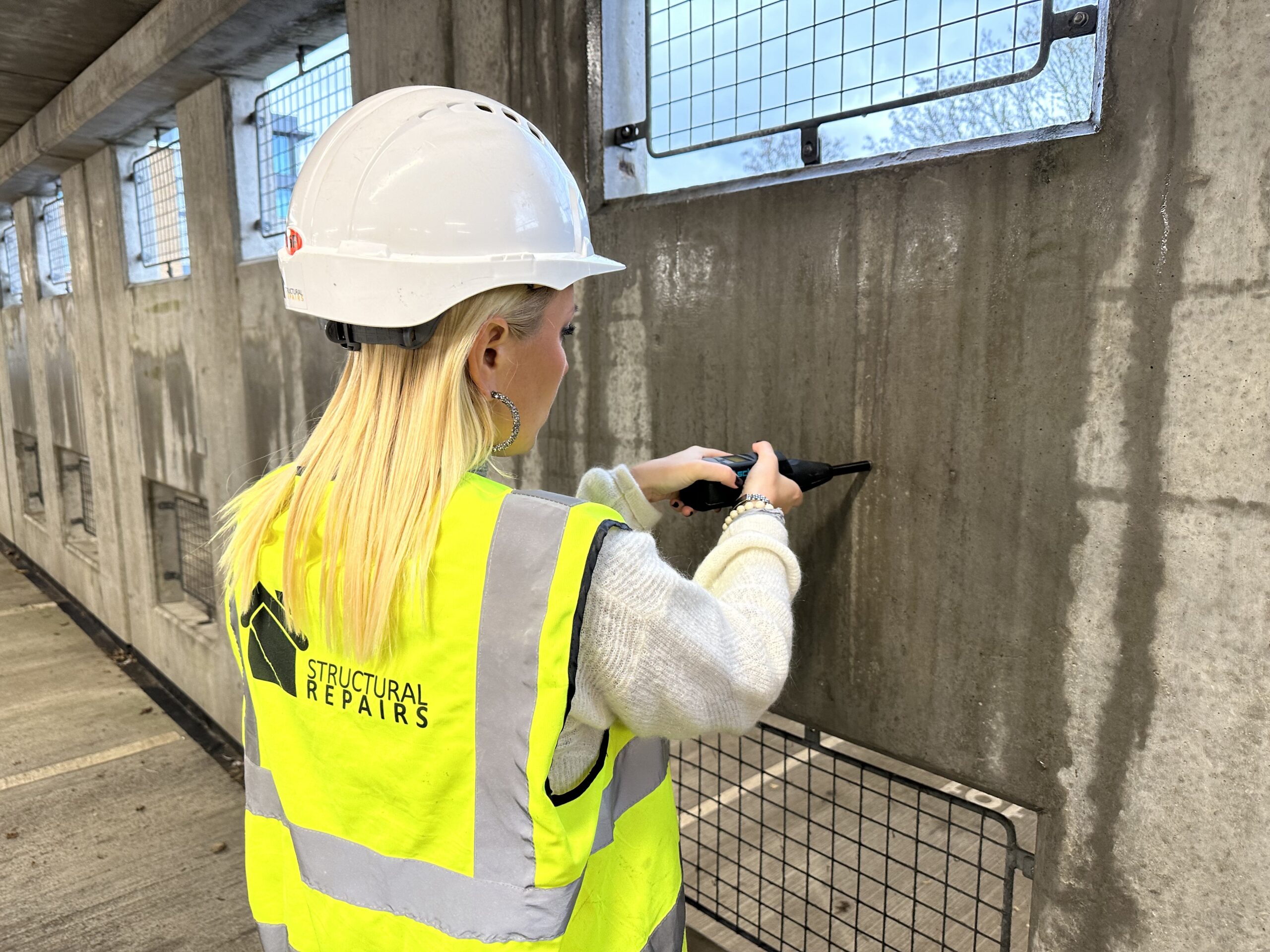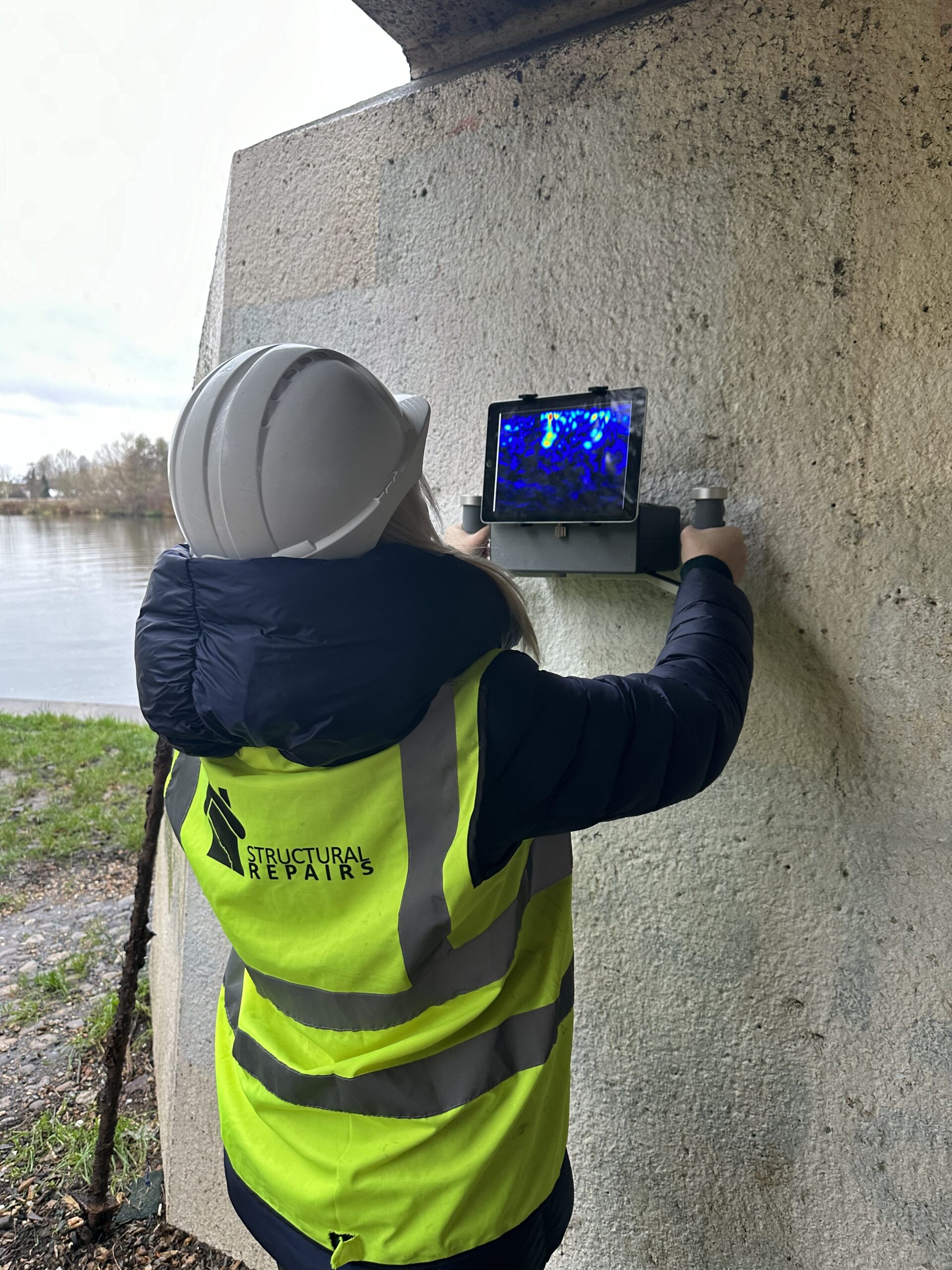Concrete Strength Testing
What Is Concrete strength Testing?
Construction projects often require the use of fresh concrete.
To prevent any structural failures, it is crucial to control the quality of this concrete.
At Structural Repairs, we provide expert testing services that will give you peace of mind and reassurance.
Our rebound hammer technology is the latest method for measuring the strength of concrete surfaces, ensuring that your hardened concrete is reliable and fit for purpose.

Why Is Concrete strength Testing So Important?
Every engineer and builder should possess knowledge about the process of testing concrete strength.
As a large number of new builds are underway, it is crucial to conduct thorough checks for any issues that may arise.
Concrete is one of the most vital materials used in construction, and failure to meet the required standards can put the entire structure at risk.
How Is Concrete Strength Testing Conducted?
At Structural Repairs, we measure the strength of concrete surfaces using the latest rebound hammer technology.
This involves using a spring-loaded hammer to impact the concrete and measuring its rebound.
We take multiple readings, discard the highest and lowest drops, and calculate the average of the remaining tests to ensure a reliable result.

What Is The Concrete strength Testing Method?
Concrete strength testing is an integral part of any construction project as it ensures the durability and reliability of the structure.
Fortunately, there are several methods available to test the strength of concrete, among which the rebound hammer is the most commonly used.
This testing tool evaluates the compressive strength of concrete by analyzing the rebound of a hammer dropped onto the surface from a specific height.
This method works on the principle that the stronger the concrete, the better it can withstand the impact of the hammer.
Thus, by conducting a rebound hammer test, engineers can easily determine the quality of the concrete and verify if it meets the required standards.
If the test reveals poor quality concrete, it must be immediately replaced or repaired to ensure that the construction process continues without any risk of compromising the structural integrity of the building.
That is why it is crucial to have a concrete strength testing plan in place before commencing any construction activity.
By implementing a concrete testing plan, you can rest assured that your building is safe and secure.
The testing process offers insights into the strength and durability of the concrete, which ultimately contributes to the long-term safety and stability of the building.
Therefore, it is crucial to prioritize concrete testing in any construction project to ensure quality, safety, and longevity.
How does a Schmidt hammer work?
The Schmidt hammer, also known as the Swiss hammer or rebound hammer, is a device invented by Ernst Schmidt. 1881 was the year the Swiss engineer introduced his hammer to measure the hardness of materials.
For measuring the strength of concrete, the hammer is an indispensable tool.
The hammer consists of a spring-loaded rod with a blunt tip that is pressed against the surface of the concrete being tested.
As the rod strikes the surface, the spring expands, and the impact force is used to determine the strength of the concrete.
One of the significant advantages of the Schmidt hammer is its simplicity, as it takes only a few minutes to complete the test.
To ensure accuracy, the hammer is calibrated before use.
The operator presses the tip against the concrete surface and records the reading.
The readings are then compared to a chart that lists the compressive strength of concrete for different readings.
This way, the Schmidt hammer is a reliable, quick, and easy-to-use tool that provides accurate results for testing the strength of concrete.
As a result, the Schmidt hammer has become a valuable instrument in the construction industry.
Thus ensuring the quality and safety of concrete structures.
The use of this tool allows engineers to detect any weaknesses or defects in concrete. These can be addressed before the construction process is completed. Ultimately contributing to the longevity and durability of the structure.

How can Structural Repairs Can Help?
The Schmidt hammer’s accuracy largely depends on the operator’s skill and the surface being tested.
Therefore, it is crucial that operators receive proper training and certification before using the tool.
At Structural Repairs, all our operators are trained in the use of the equipment and can provide you with a comprehensive plan of action for any necessary remedial works.
Structural Repairs offers on-site testing with instant reporting, which can save you days of laborious effort compared to alternative methods such as coring.
Our team of dedicated experts in concrete repair is also available to provide solutions should the test results be unfavorable.
Structural Repairs are a leading global specialist